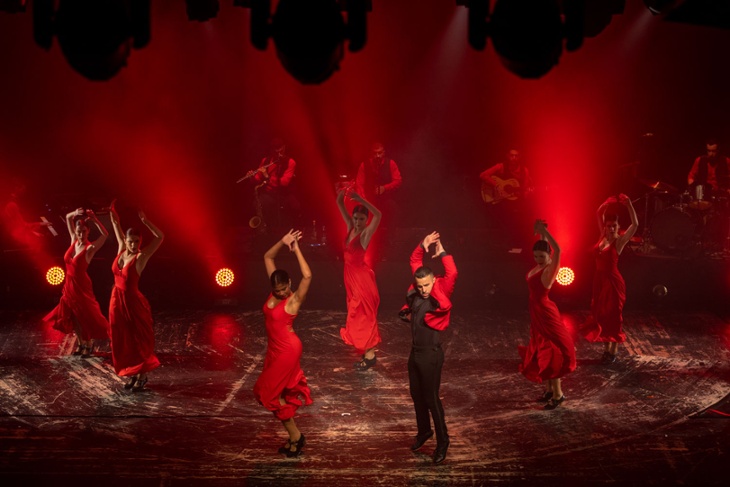
Barcelona Flamenco Ballet
January 25, 2024 | Paul Richardson

Barcelona Flamenco Ballet
Flamenco is officially two years older than America.
“Officially,” because 1774 is the first written record of such music. But that just means the music was around long before that. Perhaps for hundreds of years.
With roots deep in Spain’s Andalusia region, flamenco is linked to the Romani people of Spain, who were identified as both Gitanos and Flamenco. These Romani have their roots in the Indian subcontinent and, when they arrived on Spanish shores in the 1400s, they brought tambourines and bells, as well as the unique musical scales of Flamenco, and a broad repertoire of music and dance. Their musical culture then mixed with local music traditions, which also included influences from Arabia and Africa. And then, as often happens in history, something from “outside” came to be defined as the pinnacle of “inside” culture.
After the Spanish War of Independence (1808-1812), pride in uniquely Spanish culture (to be distinguished from that influenced from France) adopted flamenco as an embodiment of what it meant to be Spanish.
Over the centuries, the art form has developed a complexity and richness that can be difficult to encapsulate, and certainly to explain. There are numerous styles (palos) of Flamenco music and dance, but what perhaps most sets it apart is its emotional intensity, the spontaneity of the dancers, and the way the singer interprets the words. No two performances will be the same, and, unlike most western music, it is not the harmonies and melodies in the music that take center stage, but the rhythm and the interpretation.
It is said that a Flamenco dancer performs with such intense enthusiasm because he or she is “drawing inspiration from the sediment that lies in their blood.”
The troupe Barcelona Flamenco Ballet, which will bring the ancient art of Flamenco to Festival Boca on March 8, brings their “sediment” straight from the heart and homeland of the art. And the special program they are putting on, Luxuria, is a gripping tale of intrigue, power, loyalty, pleasure, and tragedy that mixes many musical styles. It highlights the position of women in dance, weaving sensuality and scandal into a tale that is all too familiar.
The main character, a man, is awash in personal conflicts. He is attractive to women and knows it. But they love him for what he has, not what he is. But then he meets the love of his life, yet recognizes that she will not be easy to love, because she is a woman of strong character – rebellious and independent. She seems to fly when she dances. Can he give up a life of lust and confront his true feeling for her?
Only flamenco knows.
Join us on March 8 to find out.
Buy books by Festival authors, past and present, at our Festival Bookshop on bookshop.org and not only do you support independent booksellers, but help Festival Boca, which gets a modest commission on all referred sales.